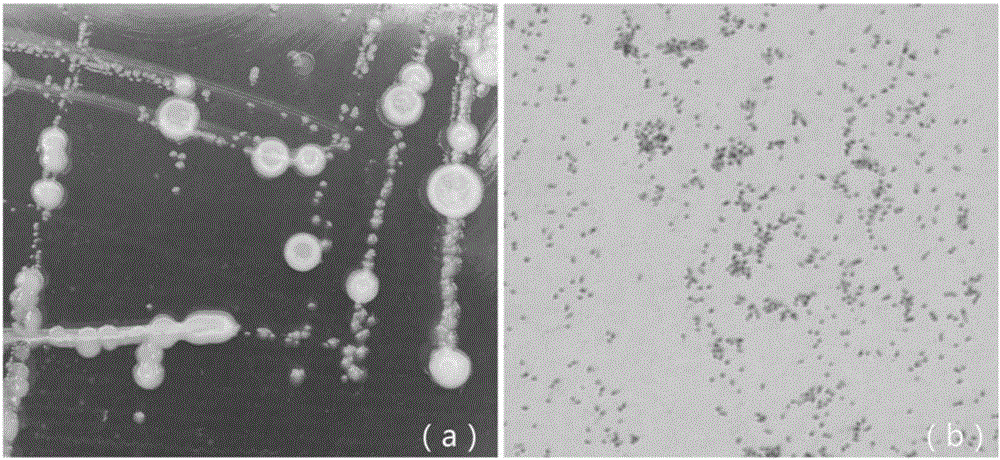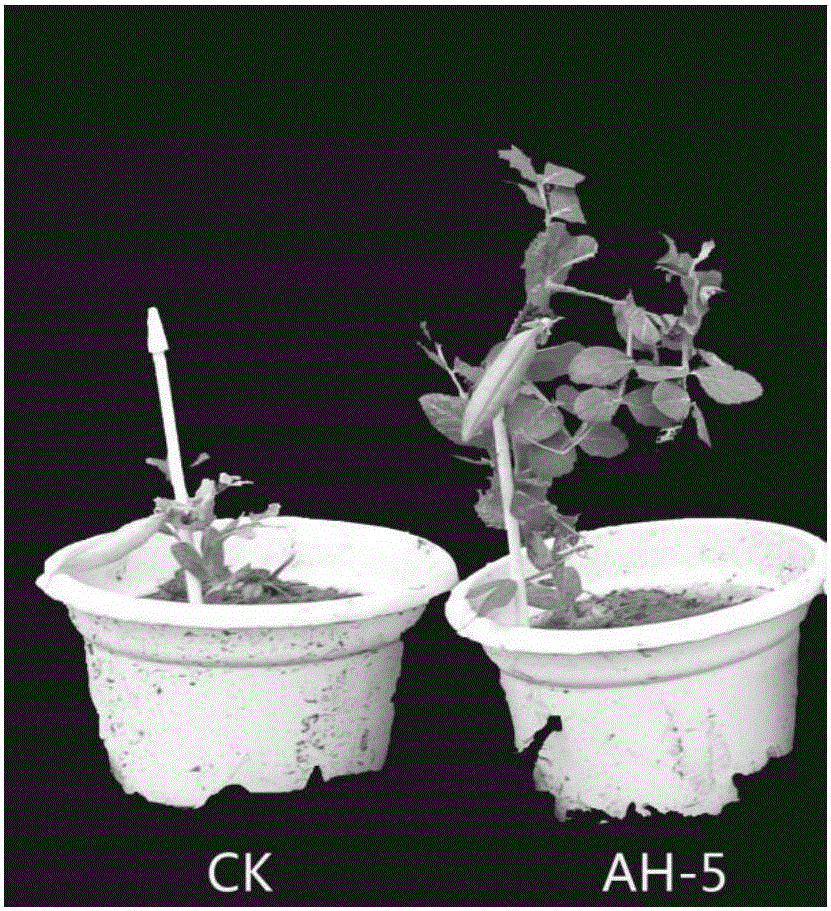Achromobacter xylosoxidans for preventing and treating plant root-knot nematode and application of achromobacter xylosoxidans
A colorless bacillus and root-knot nematode technology, applied in the direction of chemicals, applications, and pest control for biological control, can solve the problems that the research on plant nematode diseases has not been reported, and achieve low cost and good promotion. The effect of production and pollution reduction
- Summary
- Abstract
- Description
- Claims
- Application Information
AI Technical Summary
Problems solved by technology
Method used
Image
Examples
Embodiment 1
[0033] Isolation and Identification of AH-5 Strain
[0034] 1.1 Isolation of AH-5 strain
[0035] The applicant isolated and screened a strain with strong control effect on root-knot nematode from soil samples in Anhui Province, China, and named it AH-5. The isolation and purification of the AH-5 bacterial strain of the present invention adopt methods such as dilution coating plate method, plate streaking method, biological assay method and the like.
[0036] 1.2 Identification of strains
[0037] 1.2.1 Morphological identification of strains
[0038] By observing the color, shape, edge, transparency, glossiness, color of the culture medium, etc. of the colony, and observing the individual morphological characteristics by Gram staining.
[0039] Streak culture of AH-5 strain on beef extract peptone medium plate, from figure 1 It can be seen in: AH-5 colonies are light yellow, translucent, raised, dull, with slightly neat edges, and no pigment. Microscopic examination foun...
Embodiment 2
[0053] Effect of Fermentation Supernatant of AH-5 Strain on Hatching of Meloidogyne Eggs
[0054] Add 700 μL of AH-5 supernatant to each well of the 24-well plate, and at the same time add 100 root-knot nematode eggs to each well and mix them evenly with the bacterial supernatant, repeat three times, set sterile water as a control; The 24-well plates of Knot nematode eggs and AH-5 supernatant were placed in a 25°C incubator, observed and counted under a stereomicroscope after 7 days, and the hatching rate and relative inhibition rate of root-knot nematode eggs were calculated.
[0055] Effect of table 2AH-5 fermentation supernatant on hatching of root-knot nematode eggs (7d, 25°C)
[0056]
[0057] Note: Different letters in the table mean significant difference (SPSS 17.0t test, P≤0.05)
[0058] The results of incubation of root-knot nematode eggs with AH-5 strain fermentation broth showed that: with ddH 2 O is that the hatching rate of CK of control group reaches 86.5% ...
Embodiment 3
[0060] Effects of Fermentation Supernatant of AH-5 Strain on Second Instar Larvae of Meloidogyne Nematode
[0061] Add 700 μL of AH-5 supernatant to each well of the 24-well plate, add 100 root-knot nematode second-instar larvae to each well and mix with the supernatant evenly, repeat three times, and set sterile water as a reference at the same time. The 24-well plates of root-knot nematode eggs and AH-5 supernatant were placed in a 25°C incubator, observed under a stereomicroscope after 12 hours and 24 hours respectively, and the results were recorded.
[0062] The influence of table 3AH-5 fermentation supernatant on root-knot nematode second instar larvae (25 ℃)
[0063]
[0064] Note: Different letters in the table mean significant difference (SPSS 17.0t test, P≤0.05)
[0065] The experimental results of the effect of AH-5 strain fermentation supernatant on root-knot nematode second-instar larvae showed that the second-instar larvae did not die at 12h and 24h after ddH...
PUM
 Login to View More
Login to View More Abstract
Description
Claims
Application Information
 Login to View More
Login to View More - R&D
- Intellectual Property
- Life Sciences
- Materials
- Tech Scout
- Unparalleled Data Quality
- Higher Quality Content
- 60% Fewer Hallucinations
Browse by: Latest US Patents, China's latest patents, Technical Efficacy Thesaurus, Application Domain, Technology Topic, Popular Technical Reports.
© 2025 PatSnap. All rights reserved.Legal|Privacy policy|Modern Slavery Act Transparency Statement|Sitemap|About US| Contact US: help@patsnap.com



